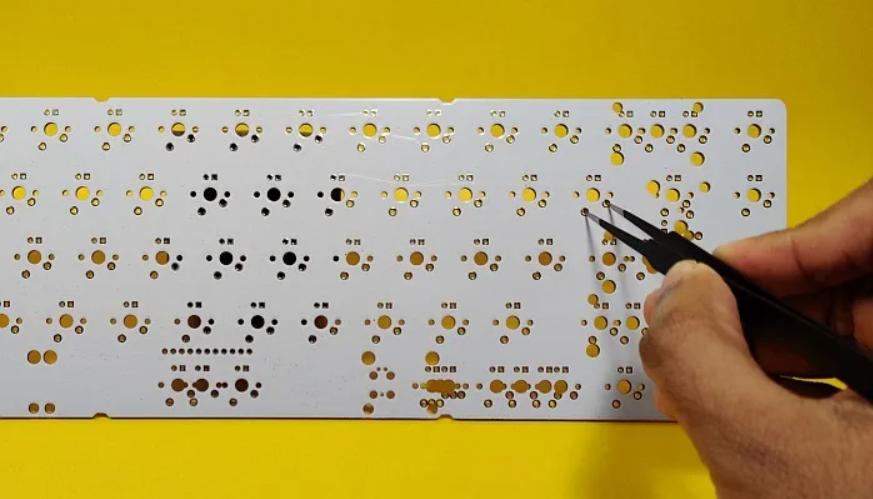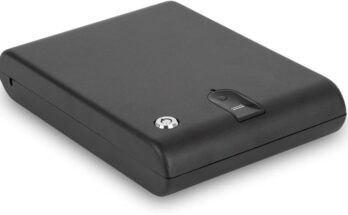Testing a mechanical keyboard is simple. Plug it into your computer and turn it on. After you mouse over to the “Keyboard” tab of your system’s BIOS or UEFI, press the function key corresponding to your keyboard’s model number. If everything worked properly, you should see a message indicating that the keyboard has been detected and initialized. Press any key to test its response.
If everything seems normal, unplug the keyboard and inspect its internals for any obvious damage or malfunctioning components. Try cleaning off any dust or dirt with a lint-free cloth before re-connecting it to your computer, just in case there was something blocking its signals. Finally, give the mechanical keyboard a few minutes of rest before testing it again; after all, users can get used to different typing rhythms fairly quickly.
Why do you need to Test Mechanical Keyboard?
You might be asking yourself, “Why should I test my keyboard?” Mechanical keyboards are susceptible to different types of failure that can affect your daily usage. Test your keyboard for resilience to keypresses, bounce, and drop tests. By doing so, you’ll not only save yourself time and money but also ensure that your keyboard is functioning as it should.
Resilience to keypresses: A keyboard’s resilience to keypresses is important because a single accidental press could cause damage. By testing the keyboard’s resistance to key presses over a range of forces and temperatures, you can determine how well it withstands everyday use.
Bounce: A keyboard’s bounce is another important factor to consider. If the keys hit the desk with enough force, they could potentially rebound and send multiple characters at once into the wrong location on the screen.

How do I know if my mechanical keyboard keys are working?
If you’re anything like me, you love your keyboard for its satisfying clickety-clack sound each key makes when pressed. But if your keyboard is starting to feel a little sluggish and not firing keys as quickly as it used to, it might be time to check that all of your mechanical keys are actually working properly. Here’s how to do it: First, make sure you have the correct connection between your mechanical keyboard and computer. Many older keyboards only use a USB connection, while newer ones may also include Bluetooth or even an AC adapter. If in doubt, consult the user manual or search online for instructions specific to your particular model of keyboard. Next, press each key several times with moderate force – don’t apply too much pressure or you might damage the keycap!
How do you test is a mechanical keyboard is not working?
If you’re like most people, you probably use your keyboard all the time. Whether you’re typing an email in your inbox, taking notes in a meeting, or editing a document on your computer, a good keyboard is essential. But even the best keyboards can start to feel clunky and slow after a while if their keys aren’t working properly. Here’s how to test whether your mechanical keyboard keys are working – and if they aren’t, what you can do to fix them.
First of all, it’s important to make sure that your keyboard is actually broken. If something seems off – like one of the keys doesn’t seem to be responding at all when you press it – then chances are that it’s not just your keyboard that needs repairs, but the key itself may be defective. In this case, replacing the key may be your best option.
How do I fix unresponsive mechanical keyboard keys?
If you’re having trouble getting your mechanical keyboard to respond, there are a few things you can do to try and fix the issue. Sometimes, unresponsive keys can be fixed with a bit of lubrication or by adjusting the key switch’s cable. If those don’t work, you may need to replace the keyboard altogether.
If you’re experiencing unresponsive or sticky keyboard keys, there are a few things you can do to get them working again. Here are 8 tips for fixing unresponsive mechanical keyboard keys:
Check the key switch. If the key switch is dirty or corroded, it may not be able to send electrical signals to the keyboard keys. Try cleaning the key switch with a mild solvent such as rubbing alcohol and a soft cloth. Make sure to dry it off thoroughly before replacing the key switch. (source) Test the keyboard connections. Are all of the cables plugged in securely? Are they routed properly? Try disconnecting and reconnecting each cable one at a time, checking that each key works correctly afterward. (source) Reset the keyboard. Sometimes problems with unresponsive keyboard keys can be resolved by resetting the keyboard.
What are the symptoms of mechanical keyboard failure?
If you’re noticing that your keyboard is not responding as quickly as it used to, or if it’s not responding at all, there may be a problem. Here are the seven most common symptoms of mechanical keyboard failure: Your keyboard won’t respond when you press keys.
The letters on the keyboard don’t appear when you type. The space bar doesn’t work. The backlight on the keyboard isn’t working. The key presses don’t register when you try to use the keyboard. There is a loud clicking noise coming from the keyboard when you press keys. The whole keyboard seems to be moving when you type. Mechanical keyboards use switches to make and receive keystrokes.
How do I reset my mechanical keyboard keys?
When your keyboard starts to feel weird, there is a good chance that you need to reset your keys. In this article, we will cover how to do just that!
The first step is to remove the keycap. On most keyboards, this is simply a push-down on one end and then pulling off the keycap. Be careful not to lose any of the screws that secure it in place.
Next, you will need to find the reset switch. It may be on the front or back of the keyboard, but usually, it is labeled as something like “RESET” or “RELEASE”. Once you find it, press and hold down both buttons at the same time until the light begins blinking fast (usually around 10 seconds). Then release both buttons and replace the keycap.
Final Thought:
if your keyboard keys are not working, there are a few things you can do to try and fix the issue. First, check to see if the key is physically broken. If it is, you may need to replace the key. If that does not work, you can try resetting the keyboard by pressing and holding down all of the keys for about 30 seconds. Finally, if all else fails, you may need to take your computer in for repair.



